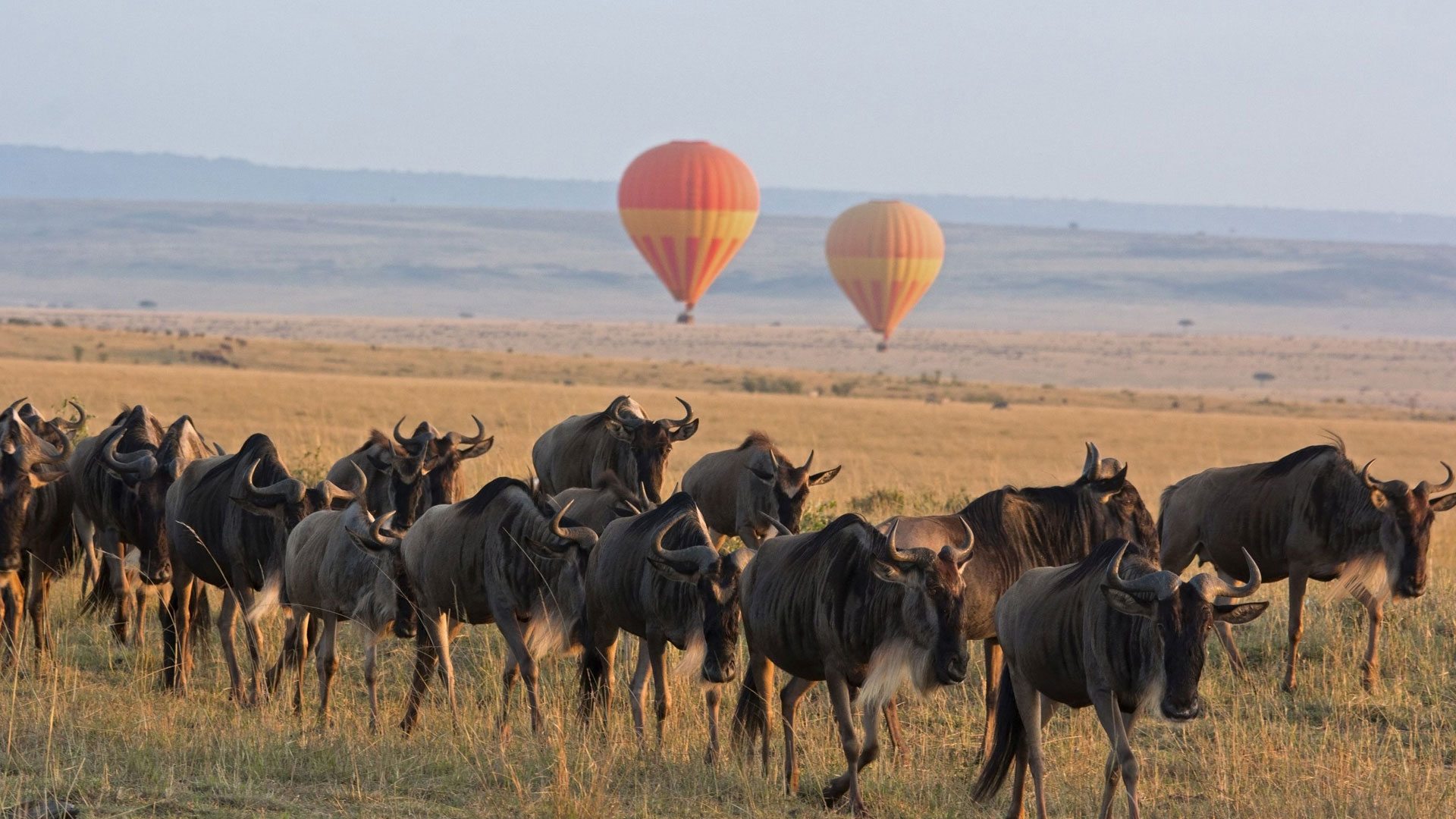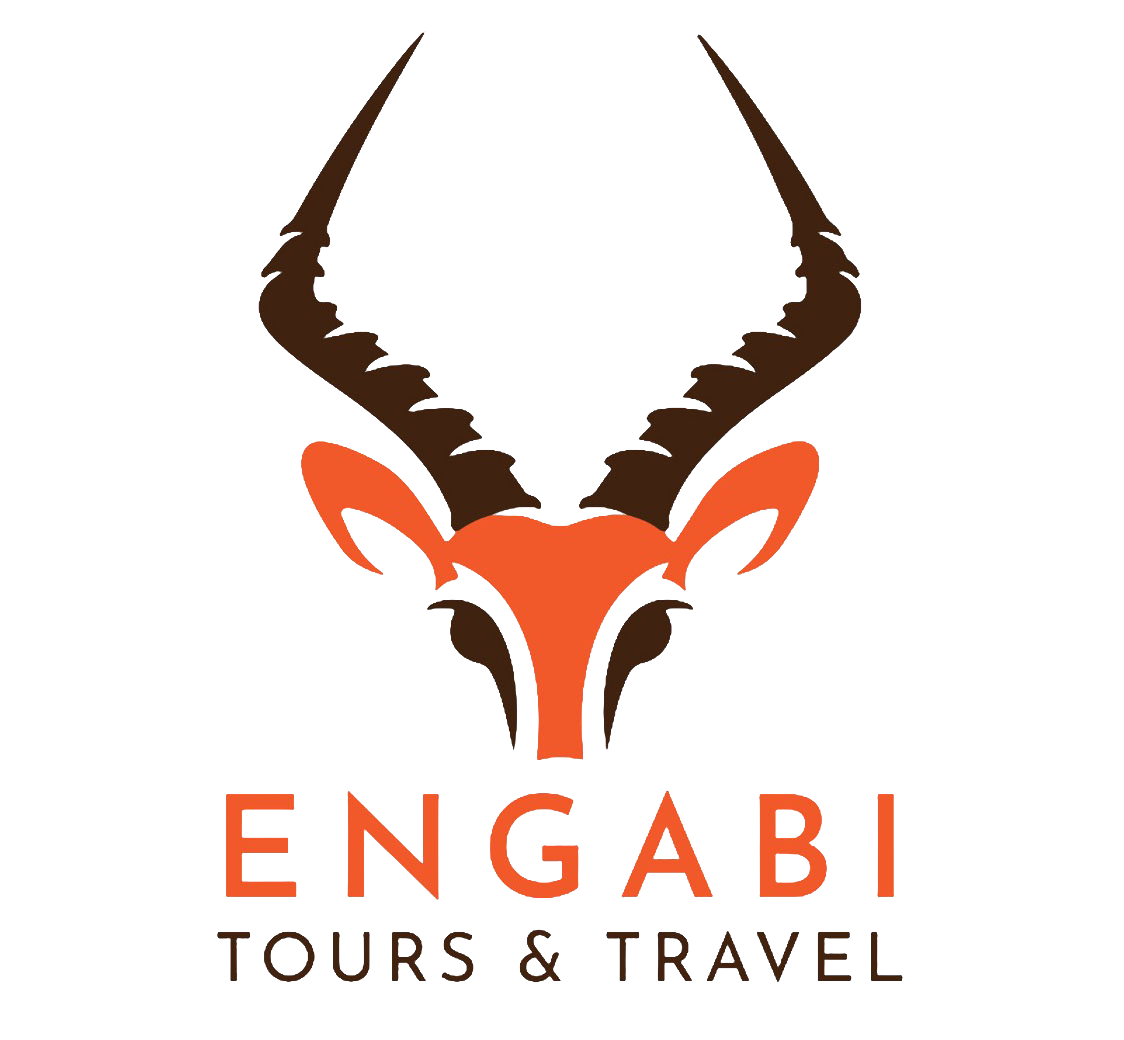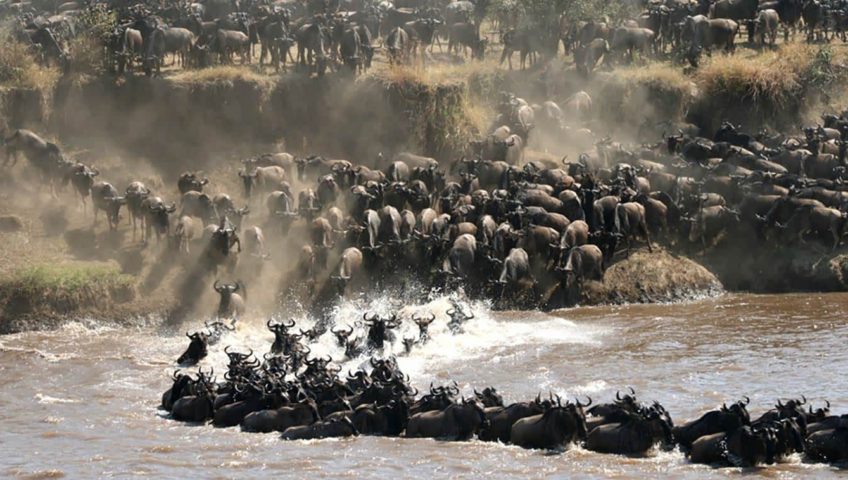The Serengeti National Park, often known as the animal hub, is a UNESCO World Heritage Site and a fantastic place to see wildlife. This park, which is situated in northwest Tanzania, is connected to Masai Mar National Reserve in the north by a boundary that runs along Kenya. The Serengeti National Park is bordered to the south and east by the Ngorongoro Conservation Area, the Maswa Game Reserve, the Ikorongo and Gumet Game Reserves, the Loliondo Game Control Area, and the Ngorongoro Conservation Area.
The 14,763 square kilometer Serengeti National Park, a popular safari destination in Tanzania, is made up of rolling grasslands, savannah, riverine forest, and forests. The Masai word “siringet” means “endless plains” or “the place where the land runs forever,” and the Serengeti national park is a true representation of an African wildlife safari destination made up of these endless rolling plains.
According to history, the Masai people used the Serengeti national park’s lands as grazing areas for their livestock for more than 200 years while grazing on the wide-open plains of the eastern Mara region. Sir Stewart Edward White was the first American to enter Serengeti National Park, and his explorations are recorded in northern Serengeti in 1913. Until professional hunters began visiting the area to hunt a variety of animals inhabiting the lands, little was known about the plains of Serengeti National Park. He went back to the Serengeti National Park in 1920 and slept there for three months close to Seronera. He and his companions killed roughly 50 lions during their visit, and as a result of the intense hunting, lions are now becoming rare in the region. Due to this, the British Colonial Administration established a 3.2 square kilometer partial game reserve; the Serengeti National Park as a whole was fully established in 1952.
After Bernhard Grzimek and his son Michael published the novel and the play “Serengeti Shall Not Due” in the 1950s, the Serengeti National Park gained considerable notoriety.
Serengeti national park comprises of a scenic landscape comprises of Lobo valley, Barfafu Gorge and Kopjes, Matiti plains, olduvai gorge, makoma hill, kusini plains, lake Ndutu, lower Grumeti woodlands, retina hippo pool, Seronera valley, Lamai triangle, upper grumeti woodlands and kopjes such as Moru kopjes, Masai kopjes, Gol kopjes and Simba kopjes.
One of the greatest places for Tanzania wildlife safaris is Serengeti National Park, which is home to a variety of mammals, including the full Big 5, carnivore species, monkeys, and reptiles. Numerous species of antelopes, including dik-diks, fringe-eared oryxes, and common elands, as well as aardvarks, aardwolves, bat-eared foxes, ground pangolins, crested porcupines, three species of hyraxes, cape hares, and many others can be found in the Serengeti National Park. Serengeti National Park is home to a variety of reptiles, including puff anders, black mambas, crocodiles, African pythons, black-necked spitting cobras, leopard tortoises, and serrated hinged teerapins.
One of the top tourist attractions in Serengeti National Park is the big wildebeest migration, which elevates the park to a top spot for wildlife viewing. The biggest population of large mammals observed anywhere in the world, the wildebeest migration involves the movement of over 1.5 million people, including over 500,000 wildebeests wandering the Serengeti-Mara environment, 250,000 plains zebras, and 300,000 Thomson gazelles.
Serengeti national park is also one of the top listed Tanzania birding safari destination habiting over 500 bird species, these birds include Masai ostrich, marabou storks, black crake, lesser flamingo, Ashy starling, love birds, yellow barbets, crowned cranes, helmeted guinea fowls, southern ground hornbill, kori bustards, secretary birds, oxpeckers, small finches, hartlaub’s turaco and many more.
Safari activities to do in Serengeti national park
Game drives
One of the most well-known Tanzania safari activities is going on a game drive through the Serengeti National Park, which has four main regions: Seronera and the south, Grumeti and the western corridor, central Serengeti, and northern Serengeti. The game drives available are
The greatest time to see big cats, such as lions, leopards, and cheetahs, is during a morning game drive, when they are most active and likely to be sunbathing.
Afternoon game drives take place right after lunch Full-day game drives provide visitors the chance to explore the entire park and see a variety of creatures, including zebras, leopards, elephants, and many more.
The greatest time to see nocturnal species like lions, leopards, cheetahs, and other big cats is during a night game drive that is conducted in the pitch-black hours of the night with the use of a spot light.
Generally game drives in Serengeti national park offers sights of many animals such aslions, elephants, leopards, buffaloes, rhinos, topis, elands, coke’s hartebeests, giraffes, impalas, warthogs, various species of antelopes such as roan antelopes, common eland, bushbucks, greater kudus, fringe- eared oryxes and dik-dik and many more.
Birding
Serengeti National Park is one of the top birding locations in Tanzania for birding safaris. The park is a refuge for birders and is home to more than 500 species of birds that thrive in its unique habitat. Birding in Serengeti national park offers sights of many species of birds such as Masai ostrich, marabou storks, black crake, lesser flamingo, Ashy starling, love birds, yellow barbets, crowned cranes, helmeted guinea fowls, southern ground hornbill, Kori bustards, secretary birds, Oxpeckers, small finches, Hartlaub’s turaco and many more.
The best time to go birding in the Serengeti National Park is from November to April, when most birds are in their breeding season and migratory birds from Europe and other parts of Africa are present in the park, though birding is possible throughout the year.
Hot air balloon safaris

As part of a Tanzania safari, hot air balloon safaris in Serengeti National Park are a spectacular and iconic way to view the park’s plains and attractions from the air. This breathtaking safari experience offers aerial views of Serengeti National Park’s wilderness, including animals like lions, elephants, buffaloes, and cheetahs as well as the magnificent landscape. Beginning as early as 6 am, hot air balloon safaris in the Serengeti National Park depart from authorized locations in the Seronera area. This experience lasts for about 1-2 hours and is followed by a champagne brunch in the bush.
Hot air balloon safaris designated sites in Serengeti national park are 3 sites and they include
Flying over the Seronera river valley in the center of the Serengeti allows you to see the animals congregating along the river.
For views of the wildebeest migration crossing the river in the months of June and July, fly above the Grumenti River in the Western Serengeti.
Flying above the southern Serengeti grasslands during the great wildebeest migration’s calving season can provide views of 8000 newborns.
Photographers who want to capture beautiful natural scenes can go on hot air balloon safaris.
Walking safaris
The best way to see every part of Serengeti National Park that a safari vehicle cannot access is to go on a walking safari. This thrilling experience gives views of Serengeti’s nature, including animals like lions, elephants, and many more. A game ranger and a guide provide guidance during walking safaris.
Cultural tours
The ideal experience if you wish to experience a traditional Maasai way of life is to take part in a cultural tour of the Serengeti National Park, which provides insight into the Maasai people’s traditional way of life. Before the parks were gazetted, the Maasai, a semi-nomadic people, lived in numerous areas of Kenya and Tanzania. Travelers have the chance to interact with the Maasai community when visiting Bomas, which are Maasai villages. Visitors can participate in typical Maasai activities including cattle husbandry and enjoy local dance and theatre. The practices, rituals, traditions, and more of the Maasai people are also made more accessible to tourists.
Where to stay in Serengeti national park
There are numerous safari lodges and camps in Serengeti National Park that provide lodging for park visitors. These lodges and camps are divided into three price ranges: luxury, midrange, and budget. They include Mwiba Lodge, Lake Ndutu Luxury Tented Camp, Namiri Plains Camp, And Beyond Under Canvas, Sanctuary Kichakani Serengeti Camp, Olakira Camp, Serengeti Bushtops Camp, Ndutu Wilderness Camp, Woodlands Camp
How to get to Serengeti national park
Serengeti National Park is a very accessible Tanzania safari destination for many places, including Arusha City. The park is reachable by both road and air transportation. It is situated in a rural area in north Tanzania.
By road:
There are four primary entrances and exits to the Serengeti National Park: Naabi Hill Gate, Ndabaka Gate, Klein’s Gate, and Bologonya Gate. The drive to the park’s main gates from Arusha takes about 6-7 hours. It is highly recommended to have a 4X4 wheel vehicle when traveling to Serengeti National Park by road.
By air:
Both international and domestic airlines fly to the Serengeti National Park. Kilimanjaro International Airport, which is located between Moshi and Arusha towns and is the preferred point of entrance to the park via international air travel, is 200 miles from the Serengeti National Park. International flights from KLM, Turkish Airlines, Ethiopian Airlines, and many more are available at this airport. Kilimanjaro National Park also offers connecting flights to Nairobi.
Regional airlines like Air Excel, Coastal Aviation, and Regional Air provide flights to Serengeti National Park that take between one and five hours to complete from Kilimanjaro International Airport and Arusha Airport to one of the park’s seven airstrips.


